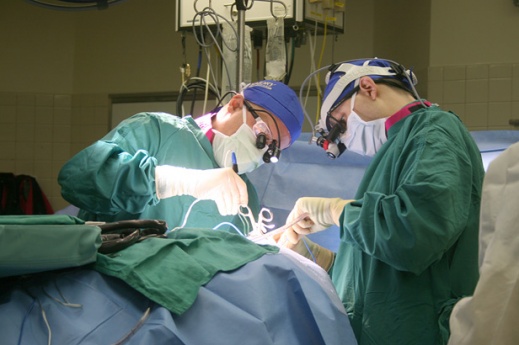<p>The year of 2012 saw technology at its highest boom, a record number of companies invented new spine technologies that would change the face of spine treatment. Innovative and enduring products surfaced during the year of 2012, some with commendable results and some which went unnoticed. Here is a list of 10 most creative, innovative and useful spine technologies of 2012.<br />
<strong>1. Bendini System-NuVasive, Inc</strong><br />
It is a rod bending system that uses the NDI IR optical technology. It uses software specially designed to register screw tulips in 6 dimensions, using the IR camera. The bend angles between each screw head is calculated by the computer. The co-ordinates of each bend are displayed on the computer screen with distance component, bend angle component and rod rotation component. This system is extremely useful in reducing the time taken to bend the rod and is especially useful for longer fixation constructs. This will result in less OR time, less anesthesia and lesser OR costs.<br />
<strong>2. FIREFLY-Mighty Oak Medical</strong><br />
An image data of patient in the form of MRI, X-Ray or CT, is submitted using FIREFLY system. 3-Dimensional computerized model of the spinal vertebrae are projected which have to be fixed with pedicle screws. After the completion of the model, trajectory guides are formulated by FIREFLY for every vertebra that has to be instrumented; this helps in creation of pilot as well as tapped holes that are exclusive to individual patient’s vertebrae.<br />
<strong>3. DeRoduction System-Biomet Spine</strong><br />
This instrumentation allows derotation of the vertebral bodies by way of attachment directly to the reduction instruments. You will not require any rods to be captured inside the spinal implant. This makes it easy to apply rotational forces to the vertebral body. Derotation is accommodated by utilization of segmental or en bloc methods. DeRoduction also makes it possible to secure rods before or after derotation. Unlike present technologies where derotation can be done only after rod reduction, this system enables the combination of independent rod reduction and vertebral body derotation while disjoining the sequence. The system ensures less surgical step as well as short intra-operative time.<br />
<strong>4. Indux-Cortical Strip-Biomet Spine</strong><br />
It is a single piece, strong cortical strip which consists of a unique cross hatch pattern that aids in maintaining flexibility and structure along with increased surface area. Indux’s channels and thru-holes help in vascularization and osteointegration. Since the strips are freezed dried, they need to hydrated before its use. Once hydrated, it conforms to the patient’s anatomy. It 100% demineralized and is the only one available in market.<br />
<strong>5. NuQu-ISTO Technologies, Inc.</strong><br />
This is a minimally invasive allogeneic cellular treatment for curing degenerative lumbar discs in a single administration. It consists of human cadaveric, juvenile, articular chondrocytes. These chondrocytes are crypopreserved and are combined with fibrin, available commercially, to administer percutaneously into the intervertebral nucleus. The administration process 2D fluoroscopic guided. Before administration thawing is necessary. It is important to note that the NuQu’s chondrocytes originate from the same precursor cells as annulus, endplate and disc nucleus. Juvenile cells are equipped to produce regenerative cartilaginous tissue.<br />
<strong>6. SpinePort MIS Access System-TransCorp Spine</strong><br />
In a minimally invasive manner, this system provides anterior approach as well as decompression or cervical spinal elements. It creates a 6mm channel that is drilled into the superior vertebral body at a trajectory as targeted for easy access and removal of herniation or fragmentation required to decompress the spine as well as nerve. It gives surgeons the required precision instrumentation for access directly to the offending pathology while preserving the healthy tissue and native disc.<br />
<strong>7. SMIS S Core Curriculum-Society for Minimally Invasive Spine Surgery</strong><br />
It is a free web based video lecture series which is interactive in nature. It helps surgeons in developing a basic understanding of minimally invasive spine surgery. Apart from an introduction to the fundamentals, the program also consists of 5 custom technique tracks such as Minimally Invasive Lumbar Microdiscectomy, MIS TLIF, MIS Pedicle Screw Instrumentation, MIS Lateral and Pre-Sacral Approach for Discectomy and Interbody Fusion. Every track has detailed information on operative pre-planning, OR setup, intra-operative imaging etc. Physicians can enroll for free and participate in lectures. They can also monitor their own progress on completion of the 5 tracks.<br />
Such innovations are an indication of a future that will have answers for all spine related problems.<br />
Article written and published by Sun Maag. Visit EmpoweredDoctor.com to find local orthopedic doctors</p>

7 Best Spine Technologies Of 2012
